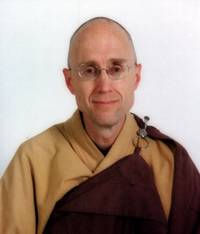Abstract: Empowerment of Buddhist Nuns in North America: Master Hsuan Hua's Vision of Bhikshuni Sangha Organization and Implementation
by Rev. Heng Sure Ph.D.
Berkeley Buddhist Monastery
Berkeley, CA USA
The Founder of the Dharma Realm Buddhist Association, (DRBA), the late Ven. Master Hsuan Hua (1916-1995), worked to established the Mahayana Buddhist Sangha order in North America for thirty years. Foremost among his four primary missions (establishing the ordained Sangha on Western soil, translating the Mahayana sutras into the languages of the world, advocating educational reform and promoting interfaith exchange), was creating and opportunity for Western women and men to receive full ordination as Bhikshus and Bhikshunis.
To date the traditional “Three-fold Platforms of Precepts” have been transmitted at the City of Ten Thousand Buddhas (CTTB) eleven times since 1976, and in the process, hundreds of men and women have been ordained into the Buddha’s Sangha order by Theras and Mahatheras of Mahayana, Theravada and Vajrayana lineages.
This presentation will describe the process at the DRBA leading to Bhikshuni Ordination. Topics discussed will include the qualifications for leaving home, as well as the requirements for full ordination. These include two years of preparation, three years in novice training and the content of the 108-day “platform” leading to final ordination. Presenters will explain the organization of the platform including the respective ceremonial and leadership roles of DRBA monks and nuns, the relationship between the Bhikshu and Bhikshuni Sangha, the constituency of transmitting masters, three-fold Transmission of Novice, Bhikshuni, Bodhisattva Precepts and further training of newly ordained nuns.
The presentation will discuss methods of sustaining the monastic vocation of women and men once they are ordained: how to maintain their continued study of precepts for five years with teachers, how to provide Sangha education & training programs educational opportunities and future vocational options. This section will report on challenges to the sustained longevity of ordained nuns, balancing ascetic rigor with physical limitations, learning skillful expedient means without compromising the spirit of the precepts, and clarifying cultural accretion from the Buddha’s original intent.
The concluding section will present issues of Sangha governance and roles amid the larger four-fold community of monks, nuns, laymen and laywomen; the roles of Bhikshunis in monastery management, preparation for Dharma-speaking, education, translation, and outreach to the community which can include social service, interfaith exchange and promotion of harmless eating and sustainable agriculture, among other good works.
Buddhismus (Foundation for Buddhist Studies) and
takes place in co-operation with the
Asia-Africa-Institute of the University of Hamburg.
See our list of sponsors.

